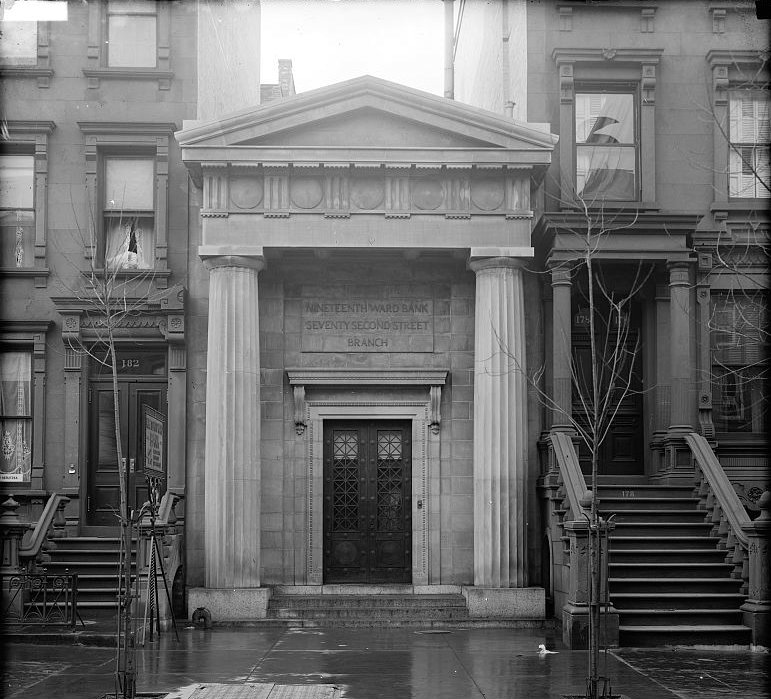 The Provident Loan Society, in former location of 19th Ward Bank at 180 East 72nd Street. Photo from Library of Congress.
The Provident Loan Society, in former location of 19th Ward Bank at 180 East 72nd Street. Photo from Library of Congress.
Pawn shops have long been known to take advantage of a community’s poor and desperate, even with an attempt to rebrand the businesses as upscale “loan offices” to the more well-off in the early 20th century. On the opposite end of the spectrum was the Provident Loan Society, a non-profit pawn shop founded in 1894 with money from the city’s most influential, including Cornelius Vanderbilt, J.P. Morgan, and August Belmont. The architecture of the Provident Loan Society that remains today, deemed by Christopher Gray in his New York Times Streetscapes column “the best-looking pawnshops ever,” reflects a concerted operational strategy to provide access to all New Yorkers in need.
The incorporated Provident Loan Society was created at the recommendation of the Charity Organization Society following the Financial Panic of 1893, with the aim to “lend money at reasonable rates to the poor upon pledge of personal property.” When founded, loans were made at a uniform rate of 1% compared to the 2 to 3% legally allowed by other pawn shops at the time. Financial return to contributors to the society was maxed at 6%, with the trustees deriving no salaries or earning for their services.
Finding it difficult to lease buildings with all the necessary facilities, the society utilized its surplus earnings to purchase and build their own locations. A report in the Industrial Lenders News of 1918 reports that “this policy, which has resulted in the erection of nine buildings and the purchase of two others, has proved a wise one, for it has made possible the extension of operations in offices accessible to the residents of all boroughs of the city…” It also notes the provision of “commodious, dignified public spaces for its clientele of both sexes,” like the above branch in Brownsville.





